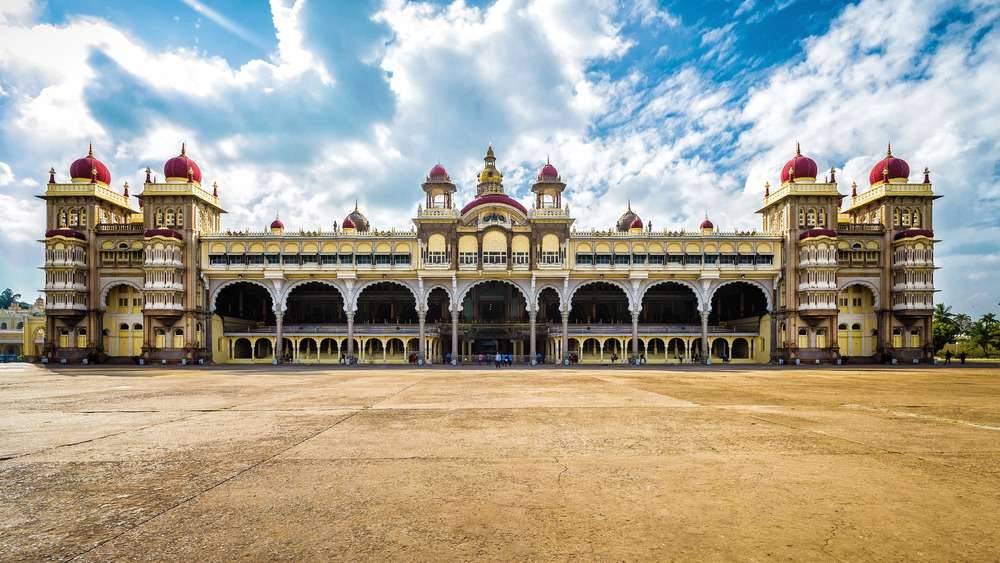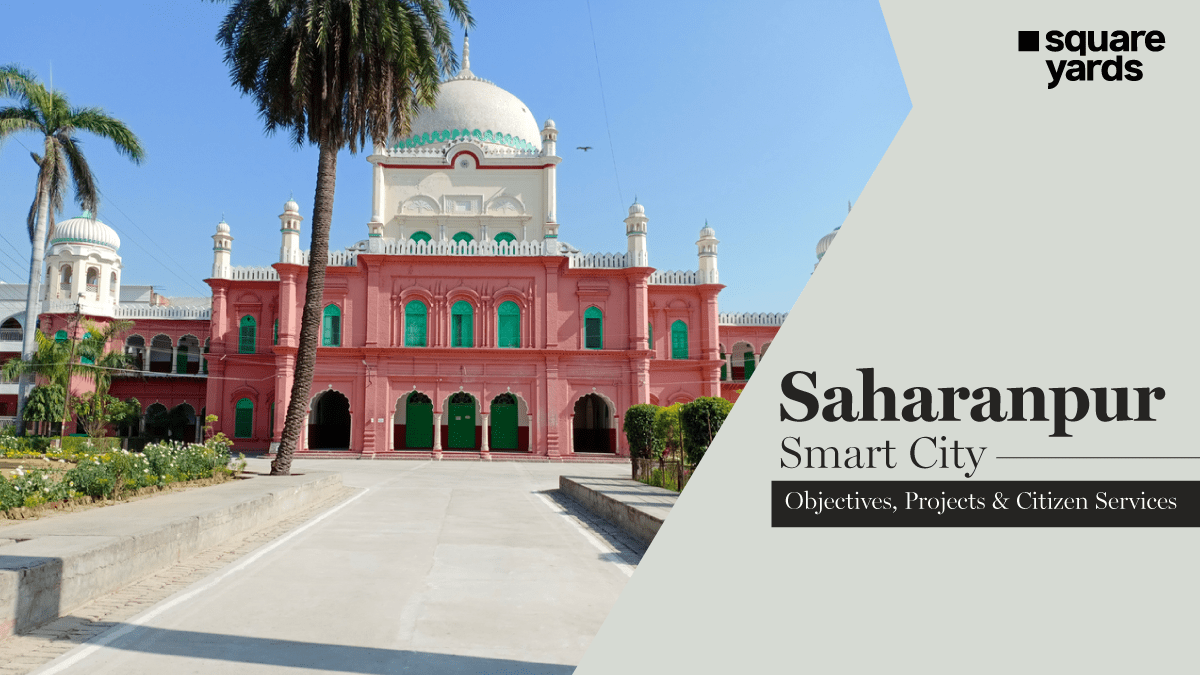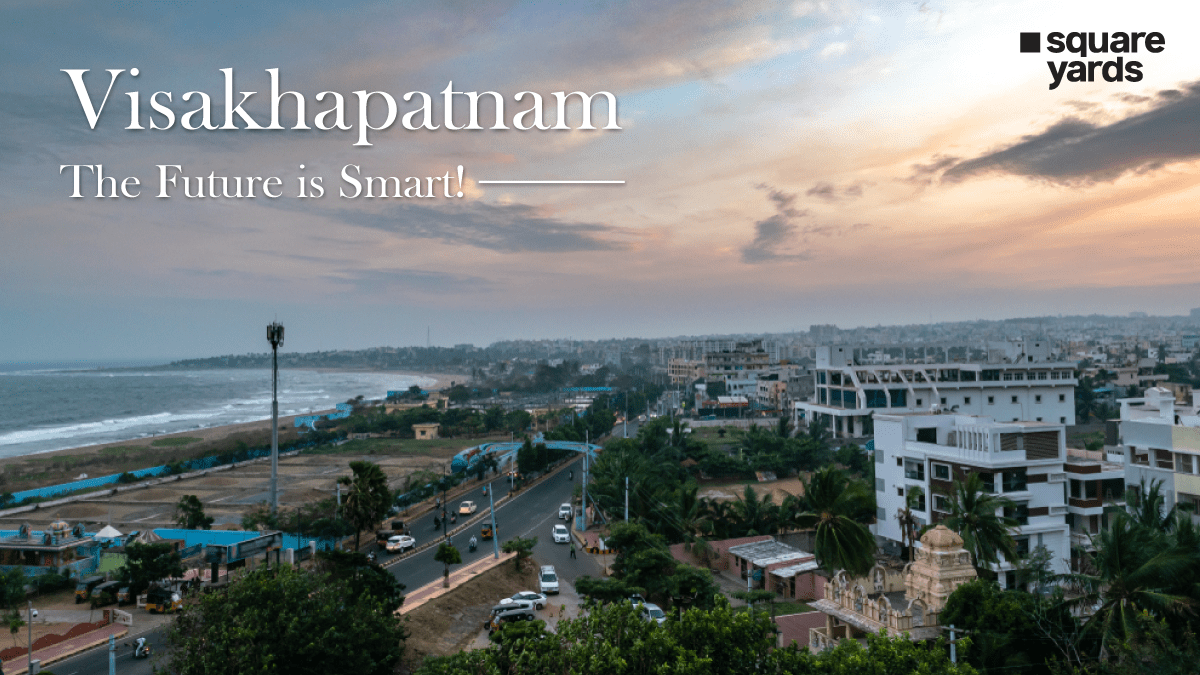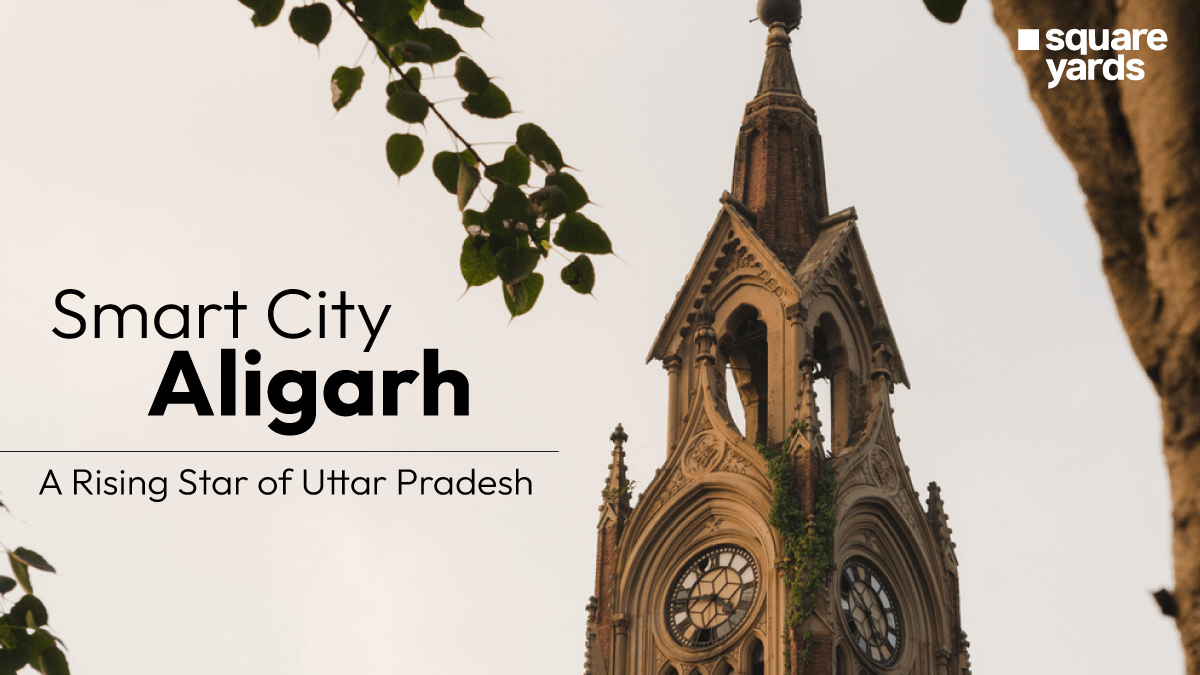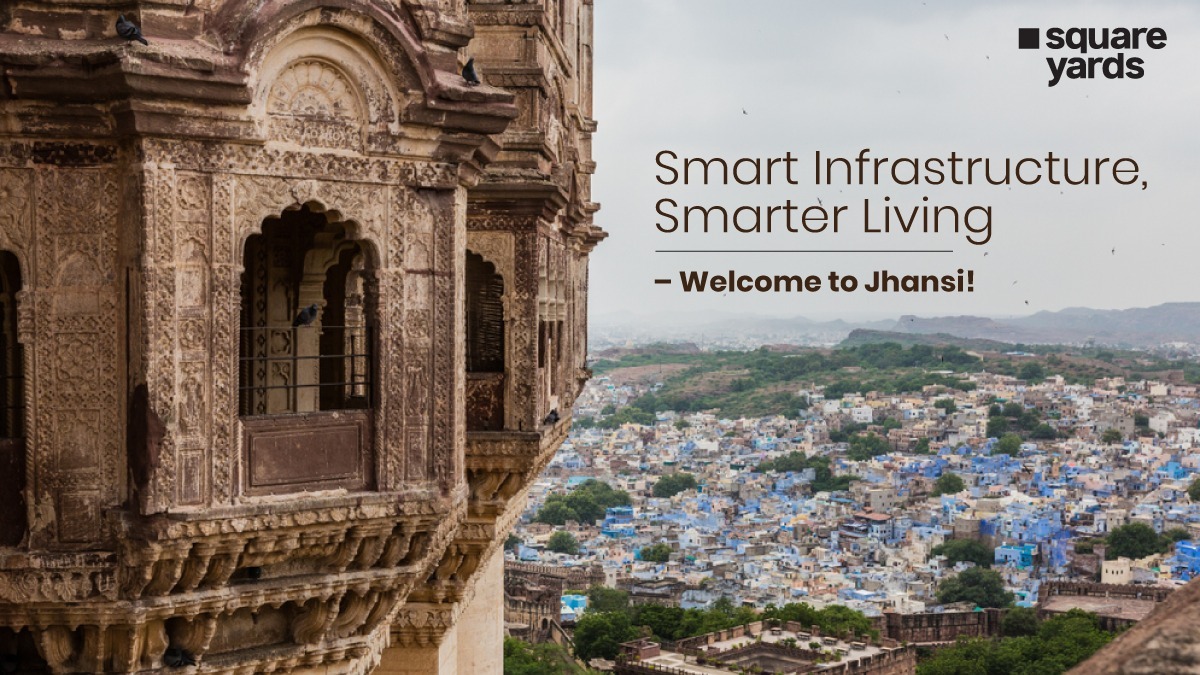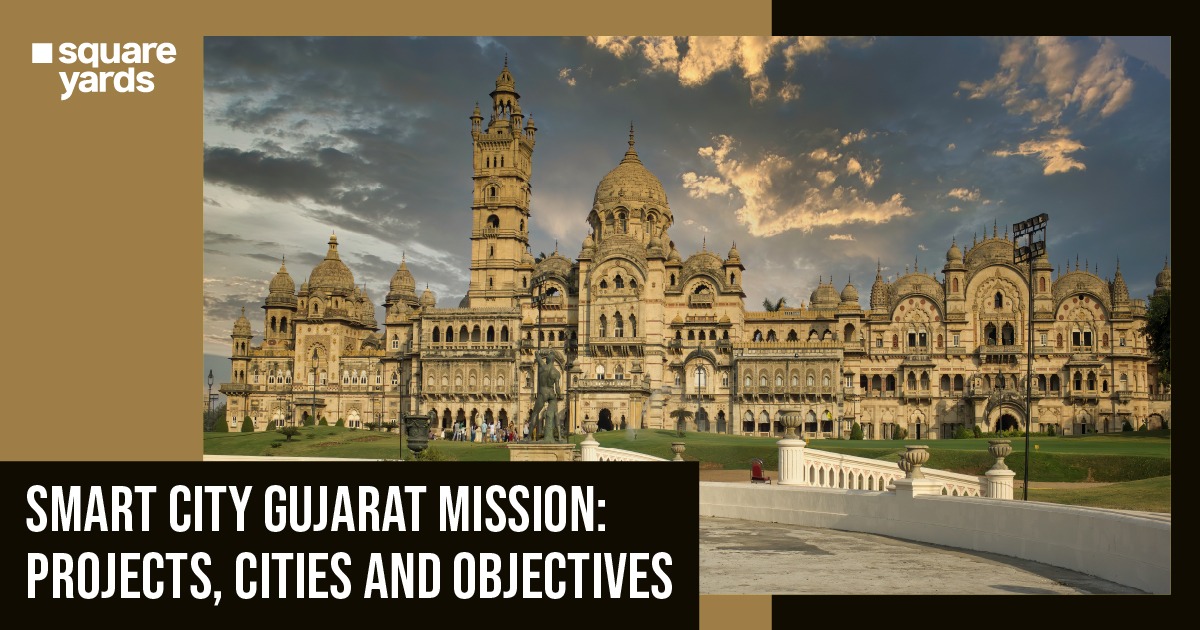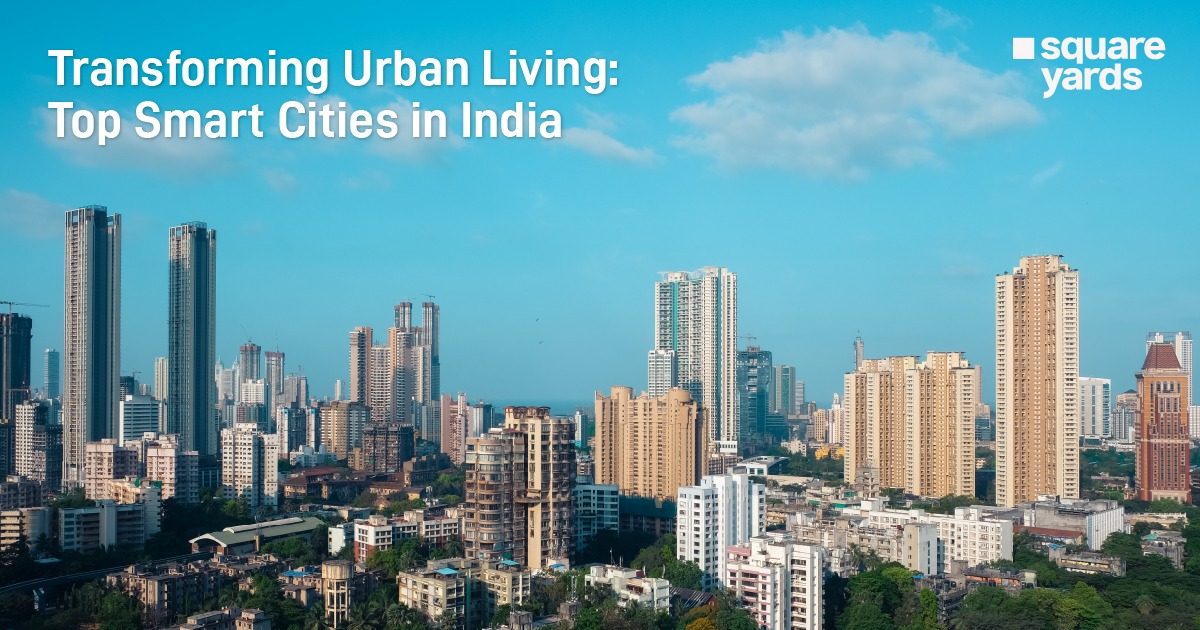Mysore Palace is the glory of Karnataka and the official house of the Wadiyar dynasty and the old Mysore Kingdom. It is one of India’s most historically significant and renowned palaces. It is nestled in the city’s heart, with a view of the Chamundi Hills towards the east. This palace is located inside the Old Fort in Mysore, well-known as the City of Palaces. The Mysore Palace is situated on Sayyaji Rao Road in Agrahara, Chamrajpura on a territory that was once a citadel or puragiri but is now known as the Old Fort. As per the buzz around Mysore Palace valuation, this regal and majestic palace is worth over Rs 3,136 crores. Hefty amount indeed!
After the Taj Mahal, Mysore Palace is the nation’s most popular tourist destination. Millions of people flock here each year to see this grand architectural masterpiece, which spans 72 acres and features four arched doorways. Yaduraya constructed the Old Fort’s first palace in the fourteenth century, which was damaged and rebuilt multiple times. After the previous palace was burned down and destroyed, the current structure was constructed between 1897 and 1912.
About Mysore Palace
In 1896, the Mysore palace, now known as the Old Palace or even the Wooden Palace, was burned to ashes. The British architect Henry Irwin was hired by Maharaja Krishnaraja Wodeyar IV and his mother Maharani Kempananjammanni Devi to create a new palace.
An executive engineer from the Mysore Palace division was in charge of the project. During his journey to Delhi, Madras, and Calcutta, he undertook extensive architectural studies, which were utilized to plan the new palace structure.
During the administration of Maharaja Jayachamarajendra Wadiyar, the palace was enlarged again in 1930 (with the building of the current Public Durbar Hall wing). Even though the fort was burned to ashes in 1896, it continued to be beautified, and the fort’s residents were gradually relocated to further additions erected off the palace.
The domes of the palace are often classified as Indo-Saracenic, having influences from Hindu, Rajput, Mughal, and Gothic architecture. It features a 145-foot five-story structure and is a three-story stone construction with marble domes. The symbol and shield of the armour of the kingdom of Mysore are shown on the entry gate and arch, surrounding which is inscribed with the kingdom’s Sanskrit slogan: Never be afraid.
Indo-Saracenic Style Architecture of Mysore Palace
The palace is a three-story Indo-Saracenic structure with wonderfully constructed square towers at cardinal points capped with domes. It was built between 1897 and 1912 in the Indo-Saracenic style. The Durbar Hall, with its beautiful roof and carved pillars, as well as the Kalyanamantapa with its glazing tiled floors and stained glass, vaulted ceiling, are well worth seeing.
Some of the palace’s other valuables are ornately decorated doors, the gold howdah (elephant throne), paintings, and the spectacular gemstone golden throne (exhibited during Dasara). The Residential Museum, temples and shrines, notably the Shwetha Varahaswamy temple, are all located within the walled royal complex. The palace is lit on Sundays, Government Holidays, and during the Dasara Festivals, when 97,000 electrical bulbs are used to light it up.
The main complex measures 245 feet long and 156 feet wide. To avoid any flames, there are fire extinguisher machines positioned throughout the castle. The palace features three entrances: the East Gate (the main entrance, which is only available during Dasara and also for nobles), the South Entrance (for the general public), and the West Entrance (for the wider populace).
The three-story stone structure features a front with numerous large arches, including two minor areas flanking the centre arch, backed by tall pillars that are made of beautiful grey granite over deep pink marble domes. A statue of Gajalakshmi, the goddess of wealth, success, luck, and prosperity, with the elephants, stands above the main arch.
Within the Old Fort, there are three large special temple structures and roughly 18 inside the palace core building. The palace was built next to the earlier Parakala Mutt offices, whose leaders have been Mysore rulers’ rajagurus (royal teacher and advisor). Mysore’s rulers were worshippers of Goddess Chamundi, which is why the palace faces the Chamundi Hills. In addition, the palace contains two durbar rooms (royal court ceremonial meeting halls) and a variety of gardens, courtyards, and structures.
Insights of Mysore Palace
After the previous one was destroyed by fire in 1896, the present Mysore Palace, the fourth one to occupy this location, was created by British architect Henry Irwin. However, it is thought that a Mysore Palace was built as part of a timber stronghold by Mysore’s royal dynasty, the Wadiyars, as early as the 14th century.
After being hit by lightning in 1638, Kantirava Narasa Raja Wadiyar (1638 – 1659 AD) reconstructed the palace, extending the old buildings and adding new halls. But, unfortunately, the new structure’s splendour would be short-lived. In the 18th century, the assassination of Chikka Devaraja Wodeyar (1673 – 1704 AD) threw the country into political turmoil.
During these volatile times, the Mysore Palace fell into disrepair, and Tipu Sultan, the child of Hyder Ali, a maverick commander in the king’s army who ascended to be the monarch of Mysore, demolished it in 1793. However, the coronation ceremony for Krishnaraja Wodeyar III (1794-1868) AD, who ascended the kingdom after Tipu Sultan’s death in 1799, did take place underneath a marquee. On his ascension, one of the king’s first responsibilities was to construct a new palace in the Hindu style of architecture, which was finished in 1803.
The hurriedly built palace quickly fell into disuse, and fire at Princess Jayalakshmmanni’s marriage ceremony in 1897 burnt it to the ground. The Mysore Palace’s fate was now in the hands of Queen Regent Kempananjammanni Vanivilasa Sannidhana, who asked well-known British designer Henry Irwin to design a new residence that would pay homage to Mysore’s as well as the Wadiyars’ histories.
History of Mysore Palace
Lovers of art and culture, strong warriors, and skilled administrators, the Wadiyars rose from regional nobles to a great dynasty that would reign Mysore for almost six centuries. However, the dynasty’s beginning is shrouded in the romantic narrative of two royal brothers hailing Dwaraka, Gujarat’s rural area.
The King of Mysore was dead, and the Chieftain of Karagahalli, a neighbouring province, was attempting to take Mysore by marrying the princess forcefully. The two brothers rose to the occasion, mobilizing warriors, killing the Karagahalli Chieftain, and rescuing the princess. The thankful princess married Yaduraya, the oldest of the two brothers and the founder of the Wadiyar dynasty.
Raja Wadiyar (1578-1617), the eighth monarch of the Wadiyar dynasty, was the one who turned Mysore into a kingdom from a feudal principality. He moved his capital from Mysore to Srirangapatna after defeating the ruler of the fading Vijayanagar Empire. During his rule, the legendary Dasara festival was also resurrected.
The kingdom was subsequently enlarged by Chikka Devaraja Wadiyar (1673-1704), the next major Wadiyar. He also instituted land reforms and simplified government operations. However, following his death, the kingdom was thrown into political chaos by a succession of ineffective rulers.
Hyder Ali, a commander in Krishnaraja Wadiyar II’s (1734-1766) army, including his son Tipu Sultan essentially governed Mysore by the mid-eighteenth century. After Tipu Sultan’s demise in a fight with the British in 1799, Prince Krishnaraja Wadiyar III [1799-1868] was put on the crown of Mysore at the age of five.
The current township of Mysore was built during the reigns of Krishnaraja Wadiyar III [1799-1868] and his son Krishnaraja Wadiyar IV [1895- 1940]. During Krishnaraja Wadiyar IV’s rule, the Mysore Palace was built on his mother’s orders, Maharani Kempananjammanni of Vanivilasa Sanndihana. She acted as Regency throughout his childhood from 1895 to 1902.
Jayachamaraja Wadiyar became the 25th and final monarch of the Mysore royal line after his demise in 1940. During this time, India gained independence, and the monarchy was dissolved, marking the end of an era in civilization and the reign of the Mysore Maharajas.
The Mysore Palace Now
Mysore is a prominent city in the state of Karnataka in South India. It was the main city of the Wadiyars, the former Maharajas of Mysore, till freedom. Mysore has long enthralled residents and locals with its gorgeous palaces, lovely gardens, and rich cultural legacy, located 140 kilometres from Bangalore. Because of its accessible size and pleasant temperature, Mysore has grown in popularity as a tourist destination. Therefore, the city has decided to preserve and promote its past rather than replace it.
The palace has been transformed into a museum that houses souvenirs, artworks, jewellery, royal robes, and other artefacts initially owned by the Wodeyars. The palace is considered to have the biggest collection of gold artefacts in terms of quantity. The principal attractions here are the Durbar Hall, Golden Imperial Elephant Throne, and the Kalyan Mandap (marriage hall).
Intricate oil paintings depicting the royal parade of the Mysore Dussehra Festival cover the walls heading to the Kalyan Mandap. The procession appears to be approaching in one’s way when seen from any direction in these artworks. The hall is beautiful, with colossal chandeliers with multi-coloured stained glass organized in peacock patterns.
The palace’s medieval Durbar Hall features an elaborate ceiling and carved pillars rumoured to be coated in gold. It also has a collection of unique artworks from well-known painters. The Chamundi Hills, which peak over the city and hold a shrine devoted to Goddess Chamundeshwari, the ruling family’s patron divinity, are seen from this hall, which is located up the steps.
Interesting Facts You Need to Know
- It has been changed into a museum displaying the Wadiyar ruling dynasty’s paintings, souvenirs, royal robes, and jewellery.
- The palace is said to have the world’s largest gold collection.
- The Golden Royal Elephant Throne, Durbar Hall, and Kalyan Mandap (wedding hall) are the main attractions.
- The entrance is through a gorgeous gallery containing European and Indian statues and other ceremonial objects.
- The Elephant Gate, with its Mysore royal insignia, is the primary entrance to the palace centre. To the north, the Royal Elephant Throne, which would be studded with 84 kg of gold, can be found (24 carats).
- Beautiful oil paintings adorn the walls of the Kalyan Mandap. The unique feature of these paintings is that the procession appears to be moving in a single direction no matter which direction they are seen from.
- Huge chandeliers and peacock motifs adorn the hall.
Bottom Line
The Mysore Maharaja Palace, often known as the Mysore Palace, is nestled in the centre of the city. Mysore Palace is among India’s most popular tourist attractions. It is also known as Amba Vilas Palace, and this is one of the biggest palaces in the nation.
Also Read:
Andheri East- Is it one of the best places to live in Mumbai?
FAQ:
When was the Mysore Palace built?
The Mysore Palace was built between the years of 1897 and 1912.
Who ruled in the Mysore Palace?
The Wadiyar family were the last rulers of the Mysore Palace.
What is Mysore Palace on today's date?
On today’s date, Mysore Palace is a museum.
Who designed the famous Mysore Palace?
Henry Irwin designed the famous Mysore Palace.
What was the original palace made of?
The original palace was made of wood, which was burned down in 1897.


